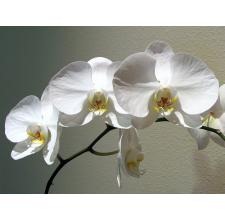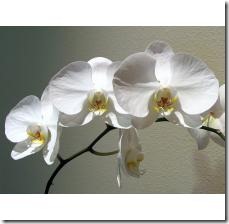Perhaps you received a flowering orchid as a gift and it’s bloomed for a long time, but now all the flowers are finally faded. What should you do now? Even gardeners who are otherwise knowledgeable about plants often feel unsure about caring for these out-of-the-ordinary plants. Pruning an orchid isn’t difficult if you follow these steps.
- Difficulty:
- Moderately Easy
Instructions
things you’ll need:
- Sharp pruning shears
- Identify which type of orchid you have if possible, since care may vary slightly between the different varieties. The Phalaenopsis, or moth orchid, is one of the most common.
- Have sharp pruning shears handy. A single-edge razor or sharp craft blade can also work. By using a sharp tool, you will give the orchid a clean cut, making it less susceptible to disease.
- Cut each flower from the stalk as it begins to fade. You may perform minor pruning while your orchid is blooming to neaten the plant.
- Save major pruning for after your orchid is completely finished blooming. Most orchids naturally go dormant in the fall, so October or November is a good time to prune. If you wait until later in the winter, you may prune away new flower buds that are forming.
- Cut back the flowering stalk to within an inch of where it appeared from the base of the plant. You particularly will want to cut the stalk back completely if it has turned yellow or brown.
- Trim the stalk if desired. Make the cut one-fourth of an inch above a node, which is a bump on the flower’s stalk. Do this on the node just below the spot where the lowest flower appeared. This method is more commonly used on the Phalaenopsis, which often sends out a second stalk after the first blooming.
- Cut the finished flowering stalk completely to the base of the plant with small or young Phalaenopsis orchids. This will encourage the plant to put its energy into building more roots and leaves, which will yield more and larger flowers in the long run.
- Leave the stalk if your orchid is a Dendrobium. Debdrobium varieties flower repeatedly on the same cane, or stalk.
- Check the roots at the same time you prune for certain orchids, including Cymbidium and Dendrobium. Prune off any dead or damaged roots and repot in an orchid potting medium.
Tips & Warnings
-
You do not always need to be concerned if you see a yellowing leaf on your orchid. It may just be part of its normal growth. Observe your orchid, however, to make sure the yellowing is not being caused by too much sun or too much water. Orchids are long-lived. As a general rule, they are five to eight years old before they even begin to bloom.


Deprecated: strpos(): Passing null to parameter #1 ($haystack) of type string is deprecated in /home/agriviek8Qv/agriviet.net/public_html/wp-includes/comment-template.php on line 2522